
The Enchanting Island of Klein Curacao
Discover the untouched beauty and vibrant marine life of Klein Curacao, a tropical paradise with pristine beaches, crystal-clear waters, and historical landmarks.
Klein Curacao is a small, uninhabited island located off the coast of Curacao in the Caribbean Sea. This hidden gem is known for its pristine white sandy beaches, crystal-clear turquoise waters, and vibrant marine life. A visit to Klein Curacao is like stepping into a tropical paradise where time stands still. The island is famous for its excellent snorkeling and diving spots. The underwater world around Klein Curacao is teeming with colorful coral reefs, exotic fish, and even sea turtles. Whether you're an experienced diver or a beginner snorkeler, the aquatic beauty here will leave you in awe. The calm and warm waters make it an ideal spot for both water sports and relaxation. One of the main attractions on Klein Curacao is the iconic lighthouse, which dates back to the 19th century. Although the lighthouse is no longer in operation, it stands as a historical monument and offers an excellent vantage point for panoramic views of the island and ocean. Another point of interest is the shipwreck of the Maria Bianca Guidesman, which adds a touch of mystery and adventure to the island. The island's remote and unspoiled nature makes it a perfect escape from the hustle and bustle of daily life. Visitors can enjoy a peaceful day of sunbathing, beachcombing, and exploring the natural beauty. There are no permanent facilities on the island, so it's essential to bring your own supplies, including food, water, and sun protection. Getting to Klein Curacao typically involves a boat trip from Curacao, which adds to the sense of adventure. Many tour operators offer day trips that include transportation, meals, and guided activities. A visit to Klein Curacao is a memorable experience that offers a blend of natural beauty, historical intrigue, and serene relaxation.
Local tips in Klein Curacao
- Bring your own food, water, and sun protection as there are no permanent facilities on the island.
- Wear comfortable water shoes for exploring the rocky areas and shipwreck.
- Book a tour with a reputable operator that includes transportation, meals, and guided activities.
- Don't forget your snorkeling or diving gear to fully experience the underwater beauty.
- Visit the lighthouse for panoramic views and great photo opportunities.
The Enchanting Island of Klein Curacao
Klein Curacao is a small, uninhabited island located off the coast of Curacao in the Caribbean Sea. This hidden gem is known for its pristine white sandy beaches, crystal-clear turquoise waters, and vibrant marine life. A visit to Klein Curacao is like stepping into a tropical paradise where time stands still. The island is famous for its excellent snorkeling and diving spots. The underwater world around Klein Curacao is teeming with colorful coral reefs, exotic fish, and even sea turtles. Whether you're an experienced diver or a beginner snorkeler, the aquatic beauty here will leave you in awe. The calm and warm waters make it an ideal spot for both water sports and relaxation. One of the main attractions on Klein Curacao is the iconic lighthouse, which dates back to the 19th century. Although the lighthouse is no longer in operation, it stands as a historical monument and offers an excellent vantage point for panoramic views of the island and ocean. Another point of interest is the shipwreck of the Maria Bianca Guidesman, which adds a touch of mystery and adventure to the island. The island's remote and unspoiled nature makes it a perfect escape from the hustle and bustle of daily life. Visitors can enjoy a peaceful day of sunbathing, beachcombing, and exploring the natural beauty. There are no permanent facilities on the island, so it's essential to bring your own supplies, including food, water, and sun protection. Getting to Klein Curacao typically involves a boat trip from Curacao, which adds to the sense of adventure. Many tour operators offer day trips that include transportation, meals, and guided activities. A visit to Klein Curacao is a memorable experience that offers a blend of natural beauty, historical intrigue, and serene relaxation.
When is the best time to go to Klein Curacao?
Iconic landmarks you can’t miss
Lighthouse Klein Curacao
Explore the historic Lighthouse Klein Curacao, a beautiful landmark offering stunning views and a glimpse into the Caribbean's maritime past.

Shipwreck on Klein Curacao
Explore the hauntingly beautiful shipwreck on Klein Curacao, a hidden gem offering stunning vistas and rich marine life in the Caribbean.

Klein Curacao Scheepswrak
Explore the historical Klein Curacao Scheepswrak and immerse yourself in the beauty of this uninhabited island paradise with its stunning beaches and underwater wonders.

Vuurtoren Klein Curacao
Explore the historic Vuurtoren Klein Curacao, a stunning lighthouse and historical landmark with breathtaking views and rich maritime heritage.

Unmissable attractions to see
Curaçao Sea Aquarium
Explore the vibrant marine life of the Caribbean at Curaçao Sea Aquarium – an unforgettable aquatic adventure for all ages.

Curaçao Ostrich Farm
Explore the unique Curaçao Ostrich Farm, where you can interact with ostriches and savor delicious local cuisine in a beautiful natural setting.
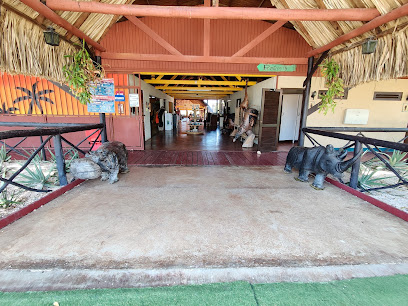
Museum Kura Hulanda
Explore the rich history of the Caribbean at Museum Kura Hulanda, a captivating journey through time and culture in Willemstad, Curaçao.

Epic Tours Bonaire | Catamaran Tours | Snorkeling & Boat Diving Day Trips
Experience the beauty of Bonaire's underwater world with Epic Tours' catamaran tours, snorkeling, and diving adventures in the Caribbean.
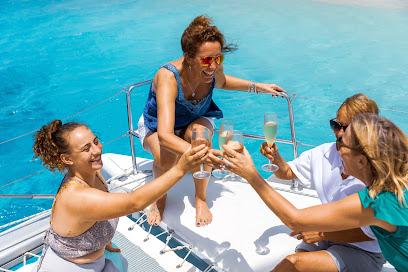
Marie Pampoen Beach
Experience the beauty of Marie Pampoen Beach in Willemstad, Curaçao, where sun, sand, and sea meet vibrant local culture.

Den Paradera Herb Garden Curaçao by Dinah Veeris
Explore the lush Den Paradera Herb Garden in Willemstad, Curaçao, a tranquil paradise showcasing the island's rich herbal heritage and natural beauty.
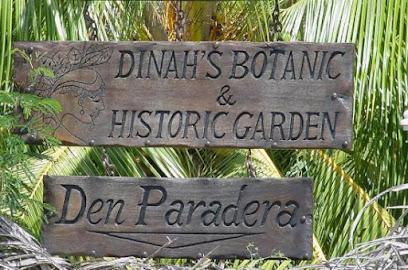
Duikcentrum van de Ven
Discover the beauty of Curaçao's underwater world at Duikcentrum van de Ven - a premier diving center for all skill levels.

Bonaire Landsailing Adventures
Experience the thrill of landsailing in Bonaire's breathtaking landscapes, where adventure meets natural beauty in the Caribbean.

Tugboat Bar
Discover the vibrant Tugboat Bar on Caracasbaai Peninsula, offering refreshing drinks, delicious snacks, and breathtaking views in Willemstad, Curaçao.

Andrea II Dive Site (22)
Discover the enchanting underwater world at Andrea II Dive Site in Kralendijk, a top diving spot in the Caribbean Netherlands with vibrant marine life.

WhatSup Bonaire
Experience the thrill of water sports in Kralendijk at WhatSup Bonaire, your hub for aquatic adventures and unforgettable Caribbean moments.

Powerboat Caribbean
Adventure awaits at Powerboat Caribbean—experience thrilling boat rides and breathtaking views in the heart of Curacao's stunning coastline.

Aqua Fun Bonaire
Explore the vibrant underwater world of Bonaire at Aqua Fun Bonaire, your premier destination for diving, boating, and water sports adventures.

Fishing Adventures Bonaire
Explore the vibrant underwater world of Bonaire with Fishing Adventures – unforgettable fishing and snorkeling experiences await!

Shipwreck on Klein Curacao
Explore the haunting beauty of the Shipwreck on Klein Curacao, a stunning tourist attraction blending history and breathtaking Caribbean scenery.

Essential places to dine
Zanzibar Beach & Restaurant
Experience tropical bliss at Zanzibar Beach & Restaurant – where stunning views meet delectable cuisine in Curaçao's paradise.
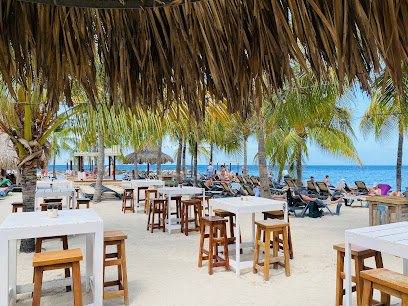
De Visserij piscadera
Experience exquisite seafood at De Visserij in Willemstad – where fresh flavors meet stunning waterfront views.

Pirate Bay Curaçao Beach Club and Restaurant
Experience culinary delight at Pirate Bay Curaçao Beach Club - where stunning ocean views meet vibrant flavors in a tropical paradise.

Restaurant & Café Gouverneur De Rouville
Experience exquisite dining at Restaurant & Café Gouverneur De Rouville in Willemstad - where local flavors meet stunning views.

Karakter Beach - Lounge - Restaurant
Discover Karakter Beach in Curaçao: where exquisite dining meets breathtaking ocean views for an unforgettable experience.

Brisa Do Mar
Experience authentic Caribbean flavors at Brisa Do Mar - a culinary paradise in Jan Thiel, Curaçao offering stunning views and delicious dishes.

La Bohème Curaçao
Experience the vibrant culinary scene at La Bohème Curaçao with delightful Caribbean flavors and vegetarian options in Willemstad.
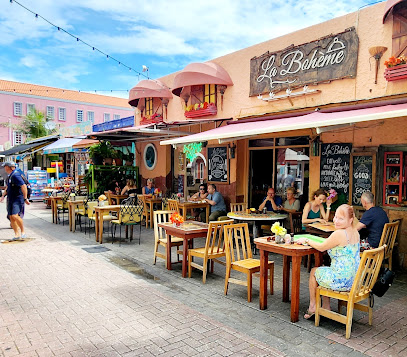
Kome
Discover Kome in Willemstad - where Caribbean flavors meet culinary creativity in a charming dining setting.
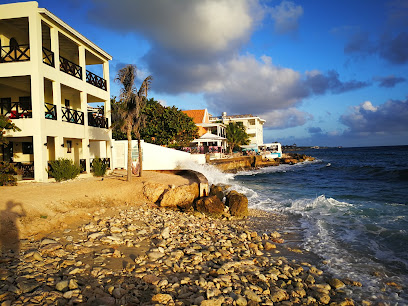
Sea Side Terrace
Experience exquisite seafood dining with breathtaking ocean views at Sea Side Terrace in Willemstad, Curaçao.
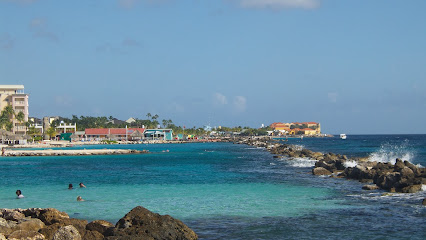
Restaurant Playa Forti
Experience authentic Caribbean cuisine with breathtaking ocean views at Restaurant Playa Forti in Sabana Westpunt.

Landhuis Brakkeput Mei Mei restaurant
Experience exquisite Caribbean cuisine at Landhuis Brakkeput Mei Mei—where dining meets family fun amidst stunning natural beauty.
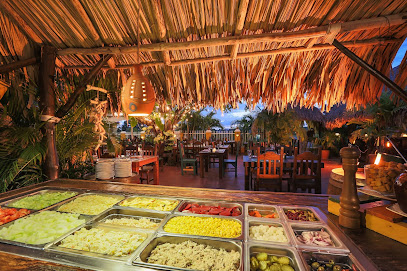
Jaanchie Restaurant
Discover authentic Caribbean cuisine at Jaanchie Restaurant in Sabana Westpunt, Curaçao—where every meal is a celebration of local flavors.

Bali Restaurant Grote Berg
Savor the authentic flavors of Curaçao at Bali Restaurant Grote Berg – A culinary gem in the heart of Grote Berg.

Chill Beach Bar & Grill
Experience culinary bliss at Chill Beach Bar & Grill in Willemstad, Curaçao—where every meal comes with breathtaking ocean views.

Perla Del Mar
Discover culinary bliss at Perla Del Mar in Willemstad—where local flavors meet modern dining in a captivating Caribbean atmosphere.

Markets, malls and hidden boutiques
Klein Curacao
Discover the pristine beauty and tranquil escape of Klein Curacao, a hidden Caribbean paradise perfect for relaxation and adventure.

Caribbean Handcraft
Explore the vibrant artistry of Curaçao at Caribbean Handcraft, your go-to destination for unique souvenirs and local treasures.

Chichi Shop Punda
Experience the vibrant essence of Curaçao at Chichi Shop Punda, your go-to souvenir store for unique island treasures.

Nonstop Family store
Discover Nonstop Family Store in Willemstad, a vibrant department store offering everything from fashion to toys for the whole family.
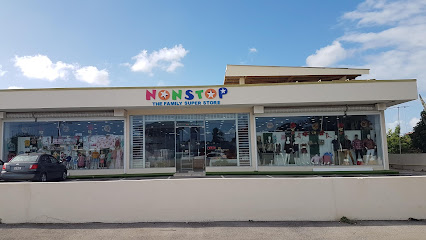
Shivam Fashion Stop
Shop at Shivam Fashion Stop in Curaçao for stylish clothing, shoes, and baby items at affordable prices in a friendly atmosphere.
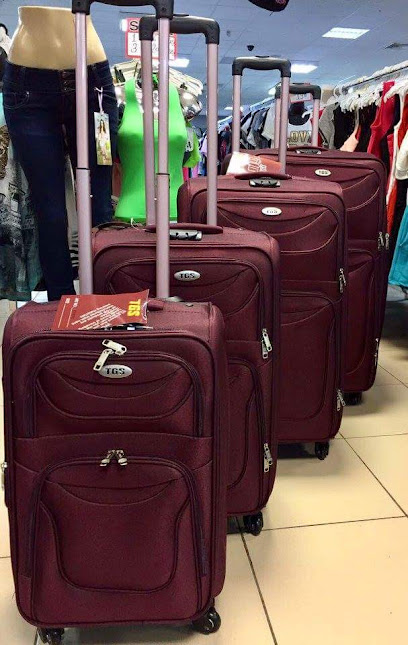
JOY by OPRA
Explore JOY by OPRA for unique gifts and local crafts in the heart of Willemstad, Curaçao, capturing the island's vibrant culture.
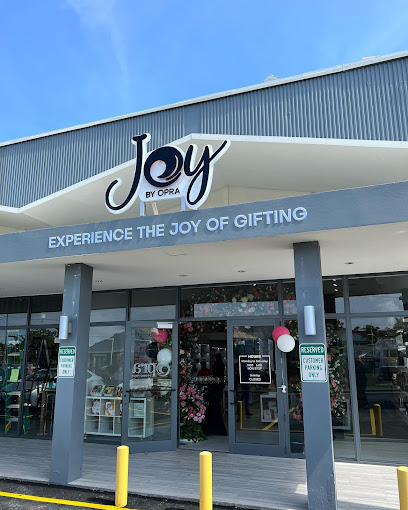
Island Treasures
Explore Island Treasures in Willemstad, Curaçao, for unique souvenirs that beautifully capture the island's rich culture and artistry.

I love Curacao #The hidden beauty of the Caribbean
Explore I Love Curacao for unique souvenirs that embody the spirit of the Caribbean, offering a taste of local culture and artistry.
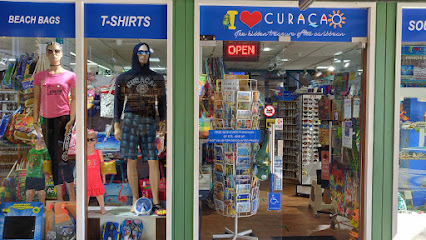
Britt Shop
Explore Britt Shop at Curacao Hato International for unique gifts and authentic souvenirs that capture the vibrant spirit of Curacao.
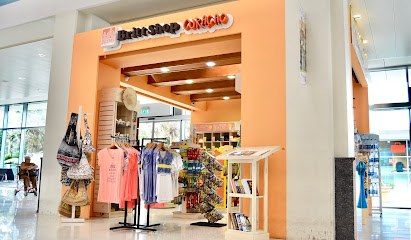
Buy Wise
Explore the vibrant clothing store Buy Wise in Willemstad, Curaçao, for a unique shopping experience filled with local fashion and style.

Dolce Vita Boutique
Experience the vibrant fashion scene of Curaçao at Dolce Vita Boutique, where local culture meets contemporary style.

Memories Curacao
Discover unique souvenirs and local treasures at Memories Curacao, a charming store in Willemstad, perfect for capturing the island's essence.

Kos Bon Shop
Explore Kos Bon Shop in Willemstad for unique gifts and authentic souvenirs that embody the spirit of Curaçao.

It's a new beginning
Discover the charm of Curaçao at 'It's a New Beginning', where local crafts meet unique gifts in a delightful setting.

Jaysons Carousel
Discover unique fashion treasures at Jaysons Carousel, a vibrant clothing store in the heart of Willemstad, Curaçao.

Essential bars & hidden hideouts
Wet & Wild Beach Club
Experience the vibrant atmosphere of Wet & Wild Beach Club in Curaçao, where relaxation meets lively entertainment in a stunning tropical setting.

Netto Bar
Discover the vibrant nightlife at Netto Bar, a lively spot in Willemstad offering a diverse drink selection and a welcoming ambiance.
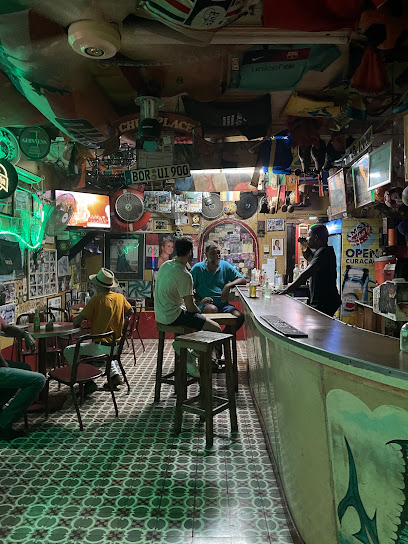
The Sopranos Sport Bar & Pizzeria
Dive into the lively atmosphere of The Sopranos Sport Bar & Pizzeria in Willemstad, where sports and delicious pizza come together for an unforgettable experience.

Captain's Sportsbar & Grill
Experience vibrant nightlife and delicious grilled cuisine at Captain's Sportsbar & Grill in Willemstad, the perfect spot for sports and entertainment.

BlackJack Curaçao - Eat. Drink. Enjoy
Discover BlackJack Curaçao: a lively sports bar and restaurant offering delicious food and cocktails in the heart of Willemstad, perfect for every occasion.

Mojitos & Bites
Discover the vibrant flavors and refreshing cocktails at Mojitos & Bites, a top sports bar and restaurant in the heart of Curaçao.

Tugboat Bar
Experience vibrant nightlife and stunning waterfront views at Tugboat Bar in Willemstad, Curaçao, the ultimate destination for relaxation and fun.
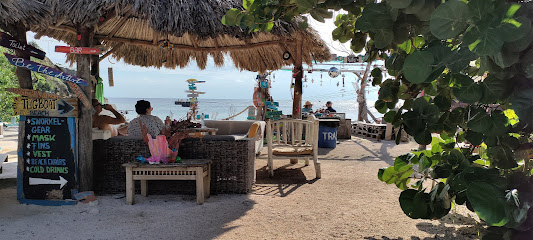
Schooner Bar
Experience the vibrant atmosphere at Schooner Bar in Willemstad, Curaçao, where delicious small plates meet refreshing cocktails amidst lively entertainment.

Tiki Loco
Experience the vibrant nightlife at Tiki Loco, a cocktail bar and hamburger restaurant in the heart of Willemstad, Curaçao.
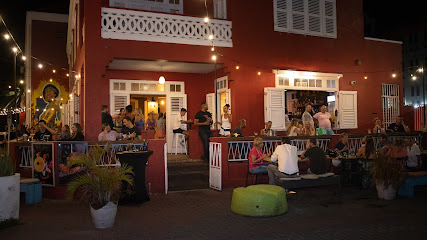
Tap Maar In
Experience the essence of Curaçao's nightlife at Tap Maar In, where local flavors and vibrant energy come together.

Doo-shee cocktail bar
Discover the vibrant flavors of the Caribbean at Doo-shee Cocktail Bar in Willemstad, Curaçao - a must-visit for cocktail enthusiasts.

The World Best Mojito Bar
Discover the vibrant atmosphere and refreshing mojitos at The World Best Mojito Bar in Willemstad, a must-visit for every traveler to Curaçao!

GAZE Bar & Lounge Curaçao
Discover the vibrant nightlife of Curaçao at GAZE Bar & Lounge, a welcoming venue for all with live music, cocktails, and an inclusive atmosphere.

BAR P Curaçao
Discover the vibrant nightlife at BAR P Curaçao, a must-visit bar in Willemstad offering a lively atmosphere and delicious drinks.

Infinity Pool Bar & Grill
Experience the perfect blend of breathtaking views and exquisite grilled cuisine at Infinity Pool Bar & Grill in beautiful Curaçao.

Local Phrases about Klein Curacao
-
- HelloBon dia
[bon dee-ah] - GoodbyeAyo
[ah-yo] - YesSi
[see] - NoNo
[no] - Please/You're welcomePor fabor/Den nada
[por fah-bor/den nah-dah] - Thank youDanki
[dahn-kee] - Excuse me/SorryPardon/Mi ta sori
[par-don/mee tah sore-ee] - How are you?Kon ta bai?
[kohn tah bah-ee] - Fine. And you?Bon. I bo?
[bon. ee boh?] - Do you speak English?Bo papia Ingles?
[boh pah-pee-ah een-gless?] - I don't understandMi no kumpronde
[mee noh koom-pron-deh]
- HelloBon dia
-
- I'd like to see the menu, pleaseMi kier wak e menu, por fabor
[mee keer wahk eh meh-noo, por fah-bor] - I don't eat meatMi no kome karni
[mee noh koh-meh kahr-nee] - Cheers!Salud!
[sah-lood] - I would like to pay, pleaseMi kier paga, por fabor
[mee keer pah-gah, por fah-bor]
- I'd like to see the menu, pleaseMi kier wak e menu, por fabor
-
- Help!Yudami!
[yoo-dah-mee] - Go away!Bai for di aki!
[bah-ee for dee ah-kee] - Call the Police!Yama polis!
[yah-mah poh-lees] - Call a doctor!Yama un dokter!
[yah-mah oon dok-ter] - I'm lostMi ta perdi
[mee tah pair-dee] - I'm illMi ta malu
[mee tah mah-loo]
- Help!Yudami!
-
- I'd like to buy...Mi kier kumpra...
[mee keer koom-prah...] - I'm just lookingMi ta solamente mira
[mee tah soh-lah-men-teh mee-rah] - How much is it?Kuantu esaki ta kostá?
[kwan-too eh-sah-kee tah koh-stah?] - That's too expensiveEsaki ta muchu karu
[eh-sah-kee tah moo-choo kah-roo] - Can you lower the price?Bo por baha e prijs?
[boh por bah-hah eh prees?]
- I'd like to buy...Mi kier kumpra...
-
- What time is it?Kuantu ora e ta?
[kwan-too oh-rah eh tah?] - It's one o'clockE ta un ora
[eh tah oon oh-rah] - Half past (10)Mitad di dies
[mee-tah dee dees] - MorningMardugá
[mahr-doo-gah] - AfternoonAtardi
[ah-tar-dee] - EveningAnochi
[ah-noh-chee] - YesterdayAyera
[ah-yeah-rah] - TodayAwe
[ah-weh] - TomorrowMañana
[mah-nyah-nah] - 1Un
[oon] - 2Dos
[dohs] - 3Tres
[trace] - 4Kuater
[kwah-ter] - 5Sinku
[seen-koo] - 6Sies
[see-ehs] - 7Siete
[see-eh-teh] - 8Ocho
[oh-cho] - 9Nuebe
[nwe-beh] - 10Dies
[dees]
- What time is it?Kuantu ora e ta?
-
- Where's a/the...?Unda ta...?
[oon-dah tah...?] - What's the address?Kua ta e adres?
[kwah tah eh ah-dress?] - Can you show me (on the map)?Bo por mustra mi (riba e mapa)?
[boh por moos-trah mee (ree-bah eh mah-pah)?] - When's the next (bus)?Kon ora ta e siguiente (bus)?
[kohn oh-rah tah eh see-goo-yen-teh (boos)?] - A ticket (to ....)Un ticket (pa ....)
[oon tee-ket (pah ....)]
- Where's a/the...?Unda ta...?
History of Klein Curacao
-
Klein Curacao, though small, holds a rich tapestry of history. The island was initially inhabited by the Arawak and Caquetio tribes, who were the first known settlers. These indigenous people were known for their fishing skills and seafaring expertise. They left behind artifacts and evidence of their existence, which have been crucial in understanding the island’s early history.
-
During the 17th century, the Dutch West India Company took control of Curacao, including Klein Curacao. The island was primarily used as a trade post and a strategic point for Dutch naval operations. The Dutch influence is still evident today in the ruins of colonial structures and the distinctive architectural style.
-
In 1850, the iconic Klein Curacao Lighthouse was constructed to help guide maritime traffic around the island. Despite being damaged and rebuilt multiple times due to hurricanes and other natural disasters, the lighthouse remains a significant historical monument. It stands as a testament to the island’s maritime heritage and the perilous journeys of sailors navigating these waters.
-
In the late 19th and early 20th centuries, Klein Curacao became a site for phosphate mining. Phosphate, used primarily as a fertilizer, was in high demand. The mining operations led to significant ecological changes on the island, stripping much of its natural vegetation and altering its landscape. The remnants of this mining activity can still be seen today.
-
Klein Curacao's strategic location near major shipping routes made it a significant point during World War II. The island witnessed several naval battles and shipwrecks. One of the most notable shipwrecks is the remains of the oil tanker 'Maria Bianca Guidesman,' which ran aground during the war. These shipwrecks have become popular diving sites, offering a glimpse into the island’s wartime past.
-
In recent decades, Klein Curacao has transformed into a popular tourist destination. Efforts have been made to preserve its natural beauty and historical sites. Conservation projects aim to restore the island’s ecosystem, protect marine life, and maintain the historical landmarks. Visitors today can explore the island’s pristine beaches, dive into its rich underwater world, and walk through its historical ruins, experiencing the blend of natural and historical wonders.
Klein Curacao Essentials
-
Klein Curacao is a small, uninhabited island located southeast of Curacao. The most common way to reach Klein Curacao is by boat. Several tour operators in Curacao offer day trips to the island, departing from various points such as Caracasbaai, the Spanish Water, or Jan Thiel Beach. The boat ride typically takes about 1.5 to 2 hours. It is advisable to book your trip in advance, especially during peak tourist seasons.
-
Since Klein Curacao is uninhabited, there are no public transportation options on the island. Once you arrive by boat, you will need to explore the island on foot. The island is relatively small, and most points of interest, such as the lighthouse, shipwreck, and beaches, are within walking distance from each other. Make sure to wear comfortable shoes and bring plenty of water.
-
As Klein Curacao is uninhabited, there are no facilities for financial transactions on the island. Be sure to carry all necessary supplies, including food, water, and any equipment you might need, before leaving Curacao. Payments for boat trips and tours to Klein Curacao can be made in the local currency, the Netherlands Antillean Guilder (ANG), or US dollars. Credit cards are widely accepted by tour operators.
-
Klein Curacao is generally a safe destination, but as with any remote location, it is essential to take precautions. There are no high-crime areas targeting tourists, but it is crucial to stay within the well-trodden paths and avoid exploring areas that seem unsafe. Always inform the boat operator of your whereabouts and expected return time. Be cautious of strong currents when swimming or snorkeling, and always use reef-safe sunscreen to protect the marine environment.
-
In case of an emergency on Klein Curacao, contact your boat operator immediately, as they will have the means to communicate with authorities on Curacao. It is essential to carry a basic first aid kit and any necessary medications, as there are no medical facilities on the island. For serious emergencies, the boat operator can arrange for a rapid return to Curacao, where professional medical services are available.
-
Fashion: Do wear lightweight, breathable clothing and bring a hat and sunglasses to protect against the sun. Avoid bringing expensive jewelry or valuables. Religion: There are no religious sites on Klein Curacao, but always show respect for the natural environment and any cultural artifacts you may encounter. Public Transport: There is no public transport; plan to walk everywhere. Greetings: Friendly greetings are always appreciated when meeting fellow travelers or boat operators. Eating & Drinking: Do pack sufficient food and water for the day. Do not litter; always take your trash back with you to Curacao for proper disposal.
-
To experience Klein Curacao like a local, consider joining a guided tour that includes snorkeling or diving to explore the vibrant coral reefs. The island's lighthouse and shipwreck offer excellent photo opportunities, so bring a camera or smartphone. Early morning or late afternoon visits are ideal to avoid the midday heat. Always respect the natural environment and local wildlife, ensuring that the beauty of Klein Curacao is preserved for future visitors.
Nearby Cities to Klein Curacao
-
Things To Do in Julianadorp
-
Things To Do in Sint Michiel
-
Things To Do in Barber
-
Things To Do in Soto
-
Things To Do in Sabana Westpunt
-
Things To Do in Westpunt
-
Things To Do in San Nicolas
-
Things To Do in Savaneta
-
Things To Do in Santa Cruz
-
Things To Do in Pos Chiquito
-
Things To Do in Paradera
-
Things To Do in Sero Blanco
-
Things To Do in Tanki Leendert
-
Things To Do in Oranjestad
-
Things To Do in Noord








